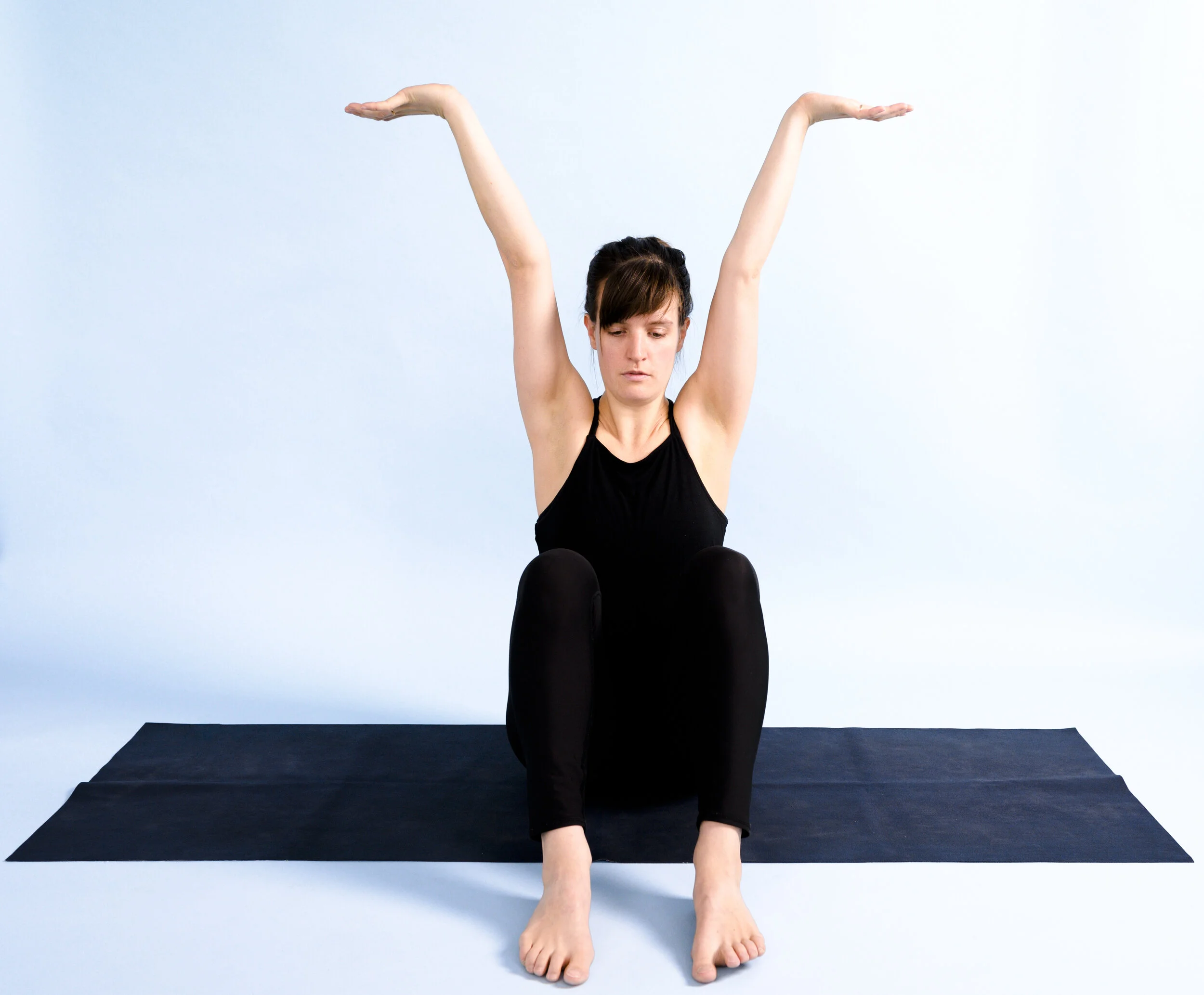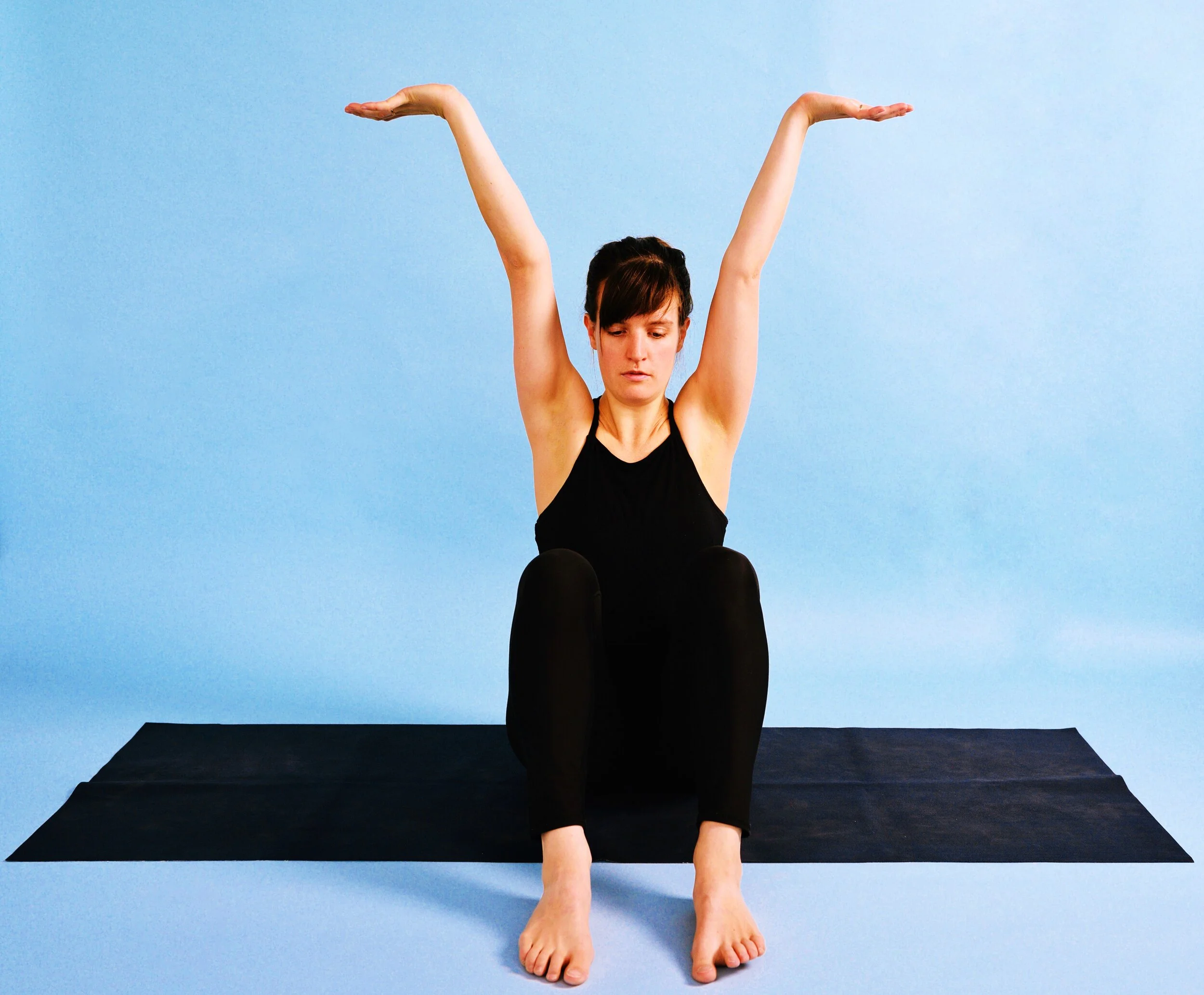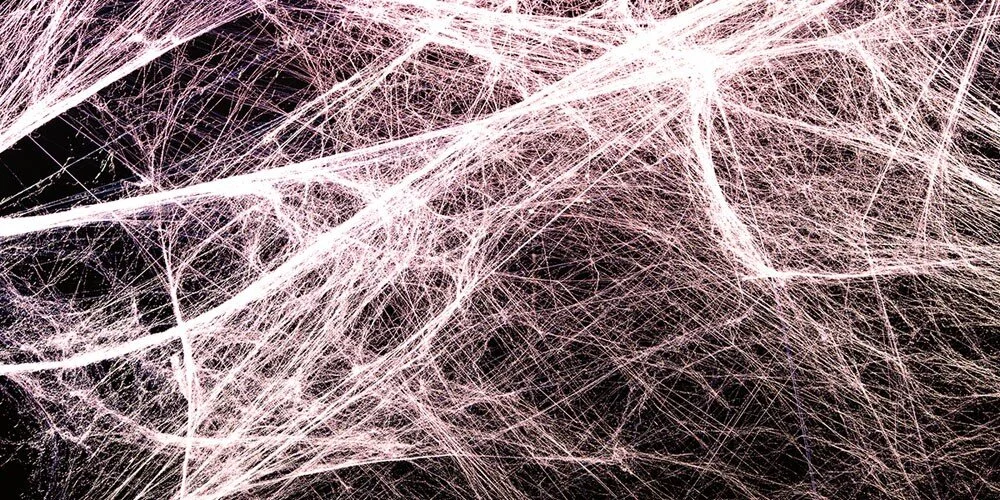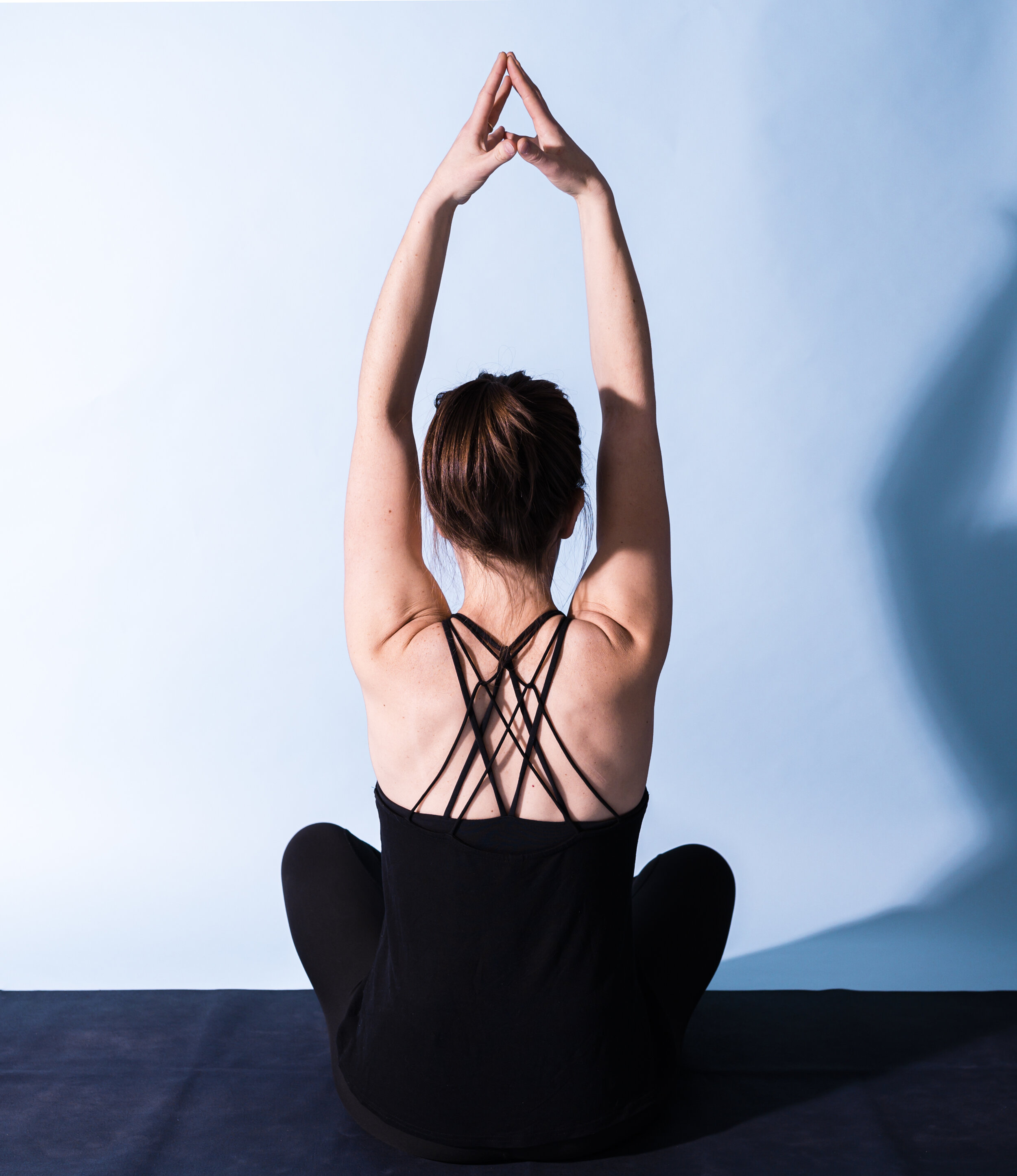What is ELDOA?!
ELDOA is a french acronym and translates to LOADS in English.
The ELDOA (LOADS) are postural exercises, which you hold for 1 minute. You can learn to do these yourself with the primary goal to create space between the vertebrae.
Longitudinal - lengthwise (referring to the spine)
Osteo - relating to bones
Articular - relating to the joint or joints
Decoaptation - the moving apart of tissues
Stretches - stretches ;)
The ELDOA are beneficial for every-body. The postures can be modified when dealing with injury or any physical limitation and are proven to improve posture and general health in various ways.
ELDOA: Benefits
improvement in joint mechanics
reduced pressure on the discs
a reduction of acute and chronic back pain: i.e. herniated/bulged/slipped/degenerated and thinned discs
spinal disc rehydration
better muscle tone
improved posture
a sense of well-being and awareness
reduced forward-head posture
increased flexibility
increased blood flow
reduced stress*
sciatica relief
and more
ELDOA: History
Dr. Guy Voyer started his career as a trainer and later studied medicine with a variety of specializations. He went on to study osteopathic medicine in Europe and completed several doctoral programs.
He began studying back pain in the 1970s and, over the course of the following 10 years, developed the ELDOA postures as a way to treat the spine.
ELDOA: In-Depth
To understand how the ELDOA work and can have this many benefits, we are looking at 3 main components:
anatomy of the spine
fascia
hydration
Anatomy of the Spine
Simply put, we can say that the spine is made up out of vertebrae and intervertebral discs.
The vertebrae are bony structures that change shape depending on its function in the spine, i.e. flexing/forward folding, extending/back bending, rotating/twisting etc.
The vertebral body, the centre of the bony structure, is similarly shaped for all the vertebrae in the spine; the vertebral body connects to the intervertebral disc.
The intervertebral discs are very efficient shock absorbers in a healthy human being. You can imagine them as a sponge; they have a great ability to absorb and excrete liquid and therefore can distribute forces equally and in all directions.
Spine Conditions
From the age of 20, the discs start to slowly lose some of their definition, making them less efficient in absorbing shocks. This process continues with age and can cause degenerative discs potentially resulting in a bulging, slipped, herniated or ruptured disc which is often paired with acute or chronic back pain, or in lumbar sciatica.
During the day, as we sit and stand, the axial force of gravity places pressure on our spine. The water inside the inner core of the vertebral disc escapes into the vertebral body through small pores. During the night, when we lie flat, there is no axial gravitational force applied to the spine and in a healthy individual, the vertebral disc draws the water back and the disc regains its original thickness. The spine is more flexible with its discs loaded with water, in the morning. (But note that the muscles and tissues around the spine are less-mobile in the morning!)
With age, the water-absorbing ability of the disc decreases, meaning that the disc doesn’t regain its original thickness, which explains why older people become shorter and less flexible.
“Summary:
The discs in-between the vertebrae are amazing shock absorbers and sponges that absorb and excrete liquid efficiently. They start to be less efficient after 20 years which can result in various back issues as we grow older.”
Fascia
Fascia 101 with Tom Myers
“Fascia is the biological fabric that holds us together, the connective tissue network. You are about 70 trillion cells — neurons, muscle cells, epithelia — all humming in relative harmony; fascia is the 3D spider web of fibrous, gluey, and Fasciawet proteins that binds them together in their proper placement.”
Tom Myers - Anatomy Trains
When our fascia is hydrated and healthy, it is able to slide, to reconstruct and reorganize itself when needed.
When our fascia is dehydrated, you can imagine it as leather-like. It will take a lot longer to reconstruct or reorganize itself, the manipulating of fascia for example through ELDOA or massage can be more painful.
“Summary:
Fascia is a 3D spider web of connective tissue throughout the body. Hydrated fascia is hugely beneficial for your health and wellbeing.”
Hydration
For your fascia to be healthy, for it to move, reconstruct and reorganize itself, and to respond to the ELDOA you need to be hydrated.
According to DO Guy Voyer, it can take up to six weeks to rehydrate yourself, so you might as well start now!
Click here to calculate your daily water intake
The colour and amount of urine that your body produces are good indicators of your hydration status. Dark yellow urine or a low urine output are signs of dehydration.
“Summary:
DRINK WATER!”
ELDOA: Fascia and the Spine
All the way along the spine runs a ligament called the Posterior Longitudinal Ligament.
This ligament connects to each individual vertebra and disc. It also connects to our nerves, the protective fluid around our spinal cord (cerebral spinal fluid - CBS) and to the fascia network that runs throughout our entire body, connecting bones, muscles, organs and everything else in the body.
By holding a precise posture for 1 minute, fascial tension, in the PLL and other muscles and fascia connections, is used to fix a specific vertebra (or segment of an articulation) while a contraction in extreme range moves the other segment away with a maximum effort throughout the entire body, this is how we decoapt, and rehydrate the intervertebral disc.
The space created through an ELDOA in between a set of vertebrae can:
rehydrate the intervertebral disc and potentially thinning disc
slow down the process of degenerative discs
free any trapped nerves
think of a herniated disc, sciatica and the vagus nerve
improve posture
ensure a free flowing of CSB (Cerebral Spinal Fluid) along the spine going to the brain
and more (see above)
“Summary:
By holding a precise posture for 1 minute, fascial tension fixes a specific vertebra while a contraction in extreme range moves the other segment away, this is how we decoapt, and rehydrate the intervertebral disc.”
ELDOA: Fascia and the Body
As Guy Voyer followed his client’s progress through x-rays to see what was working and why, he also got their feedback. It was to be expected that after a regular ELDOA practice their back pain improved, what came as a surprise was that other physical ailments improved.
“When I met with a patient I would ask, ‘How is your back pain?’ They would answer, ‘Yes, thank you, it is better, but even better, my menstrual pain is gone’ or ‘the burning sensation when I eat has improved’, or ‘my headache is gone’, or ‘now I breathe better when I sleep.’”
Through the fascia network, the muscular system is linked to the nervous- and visceral system via the spinal cord; meaning that when doing an ELDOA the rehydration of the fascia travels throughout the body and affects not only the spine but everything that is connected to it.
This can result in various holistic health benefits from reduced stress and better sleep to improved digestion and many more!
“Conclusion:
The effects of the ELDOA we practice goes well beyond our spinal health and has the potential to affect our entire health and wellbeing - with hydration being a key facilitator!
ISN’T THAT AMAZING!?”
Let’s Practice ELDOA!
Are you ready to try out ELDOA and experience the numerous benefits first-hand?
Contact me for private or corporate sessions:
“I have been dealing with pain from several sports injuries (over use) for many years. The ELDOA method has helped me regain greater joint mobility and flexibility. My posture has improved and I can to continue to enjoy my active lifestyle.
As an instructor Anne brings a tremendous focus to details and proper techniques, her background in yoga and meditation brings a completeness to the lessons. I highly recommend Anne and ELDOA.”
Class & Workshop Schedule
ELDOA / yoga classes - online
Tuesdays 2-3pm EST / 7-8pm GMT / 8-9pm CEST
Workshop: Unlocking the Power of Heatlhy Joints
Introduction to ELDOA
12 october 2024,
10:45am -12:30pm
Essenz Pilates, 1e Wilakkerstraat 35, Eindhoven
€22.50
For more information:
go to ‘schedule’ on my homepage.






